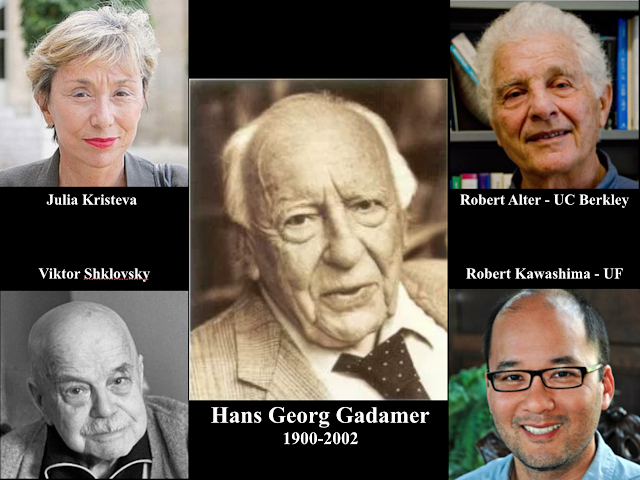RMMRA Denver topic: PROTESTANT, EMPIRICAL, & CONFIRMATION BIASES IN SHAKESPEARE & THE BIBLE, AND HOW WE MIGHT TRANSCEND THEM

This week I am headed to Denver, Colorado, for a meeting of the Rocky Mountain Medieval and Renaissance Association (instead of attending the Shakespeare Association of America conference in Washington D.C., which was tempting for its proximity to the Folger Shakespeare Library).
I am presenting a paper called “How Gadamer Might Rethink Shakespeare & the Bible,” in which I consider how a Protestant bias of “Scripture Alone” (Sola Scriptura), and an empirical bias of the emerging sciences in the mid-1800s, established an early tradition that favored very literal references in biblical allusions that utilized biblical names and phrases, over paraphrase and plot echo, which are often relatively neglected by many of the main reference books in the field. (Darwin's book, On the Origin of Species, was published just five years before Charles Wordsworth's 1864 book on Shakespeare and the Bible, and it, too, is obsessed with empirical evidence and close observation).
These biases may have led to an impression of the field being like a special variation of Bingo that simply matches Shakespeare phrases with those in the Bible translations available to the playwright. (cont. after pic)

Or in other words, you just need a really good computer program that checks passages of bible texts available in Shakespeare's time against the texts of the plays, and then perhaps a bit of human checking and discernment afterward. Unfortunate, for this misses a great deal of paraphrased biblial passages and plot echoes.
Another drawback of the field is that it sometimes seems people perform shallow readings of scripture allusions that cherry-pick those that confirm their preexisting assumptions, so we have Protestant, Catholic, or secular readings that attend only to the ways the text affirms their assumptions, and often neglect other possibilities in the texts.
I use three key ideas from Hans Georg Gadamer, as well as some from Julia Kristeva, Robert Alter, and Viktor Sklovsky (Sklovsky by way of Robert Kawashima of the University of Florida), to strive for a broader approach.
Working on this has been very helpful and will probably play an important part in my book introduction: My attention is often drawn as much or more to biblical paraphrase and plot echo than it is to some of the more explicit, literal allusions.
I will post more of my presentation later here on this blog.
Comments
Post a Comment